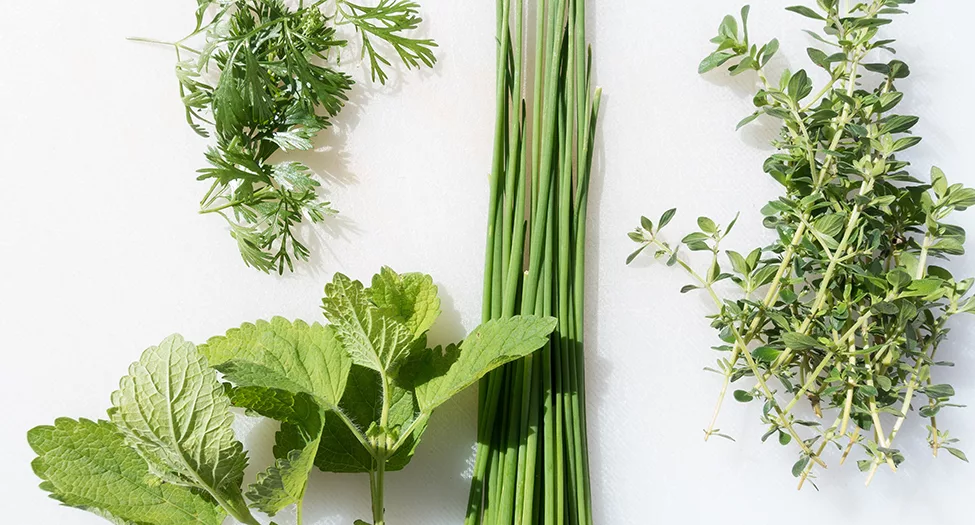
Home » Herbal love can go beyond the stockpot
Herbal love can go beyond the stockpot

June 13, 2019
By Marilou Shea
What’s green and
typically soft, smells good and blankets you, your plate or room with
swoon-worthy fragrance? Herbs.

Food Truck Academy
I love herbs! Can’t
get enough of them. Mostly because they’re often pretty, smell good and have
lots of variety. Sounds like a good first date, right? And what appeals to the
logical part of me is that they typically serve a host of functions. There’s something
raw and earthy about squeezing the leaves of an herb, and — poof — an aromatic
elixir wafts out. You don’t even have to respect it by identifying the herb
you’re giving a love-squeeze to – its aroma will automatically tell you.
They’re so not coquettish and I love that too.
My herbal garden,
though traditional and a bit ho-hum, makes up for this in the extended culinary
uses I find for those same herbs. I grow two different kinds of basil, two
different kinds of oregano, tarragon, rosemary and English thyme, along with
sage and chives. I adorn grill marinades, salad dressings and pastas with these
herbs and dry and store them for year-round use. I must say I do enjoy a bit of
satisfaction knowing I groomed the herbs personally as part of my fine fare.
By most accepted
definitions, herbs are plants with savory or aromatic properties used for
flavoring and garnishing food, medicinal purposes or for fragrances. They
exclude vegetables and other plants consumed for macronutrients. Culinary use
typically distinguishes herbs from spices. Herbs generally refer to the leafy
green or flowering parts of a plant, while spices are usually dried and
produced from other parts of the plant, including seeds, bark, roots and
fruits.
There’s a ton of
folklore around herbs, and I’m amazed archaeologists date our love affair with
herbs between 30,000 to 50,000 years ago. Herbs have cast their spell in a
variety of ways — mystical implications, medicinal values, tea brews, culinary
purposes, garden love and even Martha Stewart touts fresh herbs as a simple and
elegant decorating solution.
It’s a safe bet that
sesame and sesame oil, garlic and onions were part of the ancient Greek and
Roman diet. Then, as now, those Mediterraneans exemplify good culinary taste.
Many other herbs appeared on the culinary landscape and have struck our hearts
and stuck to our palates since then. The famous Greek physician Hippocrates,
known as the father of modern medicine and from whom medical personnel take the
famous Hippocratic oath, was a huge fan of herbal remedies.
Of course, Asia was
at the forefront of setting trends in the herbal niche, too. “The Divine
Farmer’s Classic of Materia Medica,” written about 2,000 years ago, lists 365
healing remedies.
Take salicylic acid,
for example. It’s a key ingredient of aspirin. It was first described by
Hippocrates, who referred to a white powder derived from willow bark (the tree)
which alleviated the symptoms of aches, pains and fevers.
In keeping with my
passion for herbs, I’ll share an ode to my favorites, with inspiration from
poet Elizabeth Barrett Browning’s “How do I love thee? Let me count the ways:”
- Basil: Smooth-talking leaves that render a mighty nice kick, distinct fragrance and wide variety symbolizing love, trust, prosperity and courage. For making life brighter in a myriad salad creations and a true highlight in bruschetta, gazpacho or caprese salads.
- Sage: Velvety texture and properties of healing, wisdom, health and protection; yummy as a brown butter sauce on orechetti or other scoop pasta. Fresh or dried, you’re out of this world in poultry dishes.
- Thyme: Short, stumpy goodness and hearty structure signifying purification, healing and psychic cleansing. Remarkable in or on fresh vegetables, herbed polenta, bread, muffins, quiche and pork dishes.
- Chives: Showering bulbs of purple splendor conveying your harvest time, delicate flavor and well-traveled use the world over. Your healing, protection and purification elements personify all good things. Adorn your favorite potatoes (in all their variations), salad vinaigrettes, omelets and various fish.
- Tarragon: Flaky soft, feathery French leaves that pack quite a flavor punch despite your skinny anatomy. You epitomize cleansing, regeneration and transformation and make magic happen with chicken, chicken salad, creams, broths and whatnot.
The curative effects
are many and have been scientifically proved. Herbal applications are more
popular than ever today, either in their natural state or in human-made active
compounds. More than 25 percent of today’s drugs contain plant extracts as
active ingredients and herbal preparations can be spied in stores, health food
co-ops, boutiques and online in a variety of forms. Join me, won’t you, on this
journey of herbal essence. Look for a deep dive into herbs in the future.
What’s not to love?
Food Love columnist Marilou Shea is an adjunct faculty member for Columbia Basin College’s hospitality program and Food Truck Academy, as well as the creator of Food Truck Fridays.
Local News Food Processing
KEYWORDS june 2019





